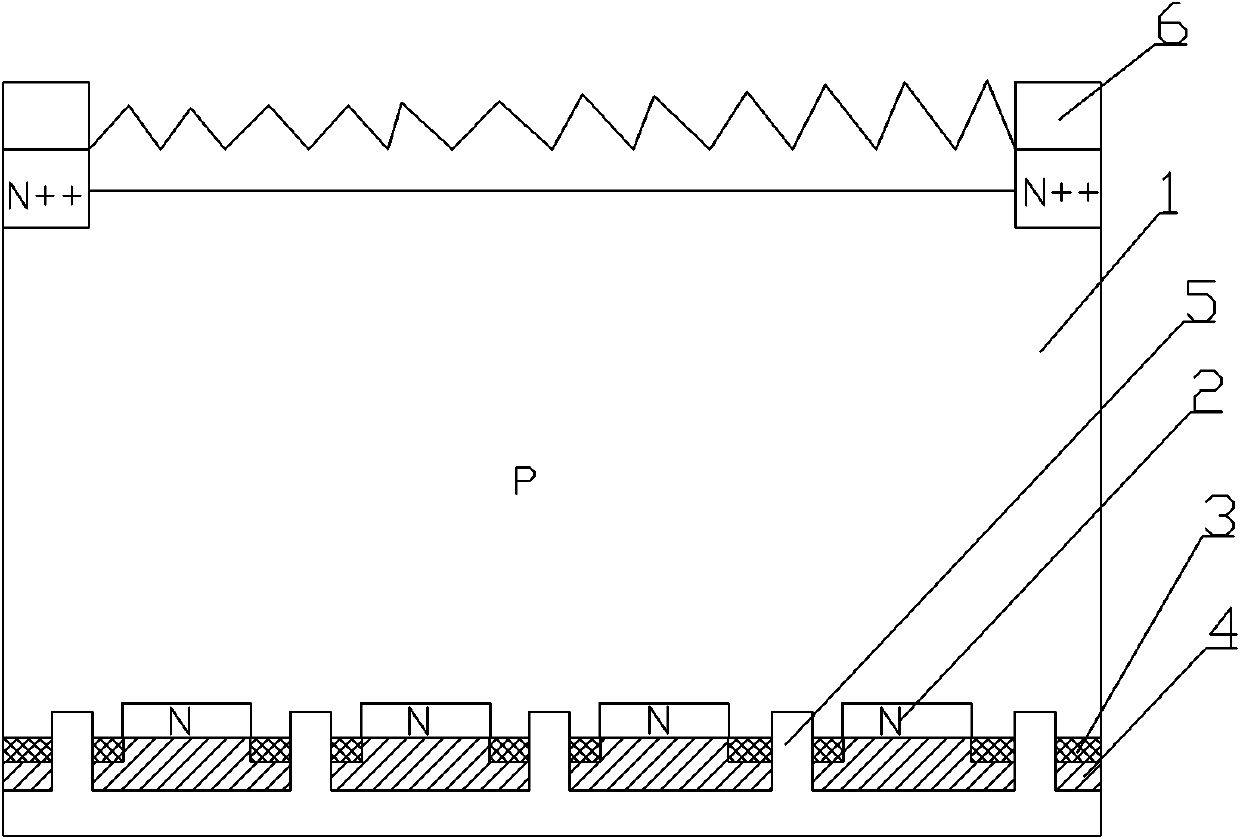Back face passivating structure and method for floating junction of solar cell
A solar cell and backside passivation technology, which is applied in the direction of circuits, photovoltaic power generation, electrical components, etc., can solve the problems of reducing series connection, high diffusion temperature, poor optical and electrical performance of aluminum back field, etc., to increase voltage and efficiency, reduce composite effect
- Summary
- Abstract
- Description
- Claims
- Application Information
AI Technical Summary
Problems solved by technology
Method used
Image
Examples
Embodiment Construction
[0021] Such as figure 1 As shown, a solar cell floating junction rear passivation structure, a layer of N-type region 2 is added on the back of P-type silicon substrate 1, and a passivation layer is grown or deposited on the N-type region 2.
[0022] The method for making the passivation structure is as follows: after the silicon chip is cleaned and textured, a layer of 50nm-300nm silicon dioxide film is grown on the surface of the silicon chip by thermal oxidation.
[0023] Grooves are made on the front electrode 6 of the silicon dioxide on the front of the battery for heavy diffusion to form an emitter junction on the front, and the silicon dioxide on the front acts as a diffusion barrier. The silica on the front side is completely removed after the front side re-diffusion is complete.
[0024] The silicon dioxide 3 on the back is reserved, and the reserved thickness is 20-200nm, and then grooves are made in the diffusion N-type region 2 of the silicon dioxide 3 on the back...
PUM
 Login to View More
Login to View More Abstract
Description
Claims
Application Information
 Login to View More
Login to View More - R&D
- Intellectual Property
- Life Sciences
- Materials
- Tech Scout
- Unparalleled Data Quality
- Higher Quality Content
- 60% Fewer Hallucinations
Browse by: Latest US Patents, China's latest patents, Technical Efficacy Thesaurus, Application Domain, Technology Topic, Popular Technical Reports.
© 2025 PatSnap. All rights reserved.Legal|Privacy policy|Modern Slavery Act Transparency Statement|Sitemap|About US| Contact US: help@patsnap.com

